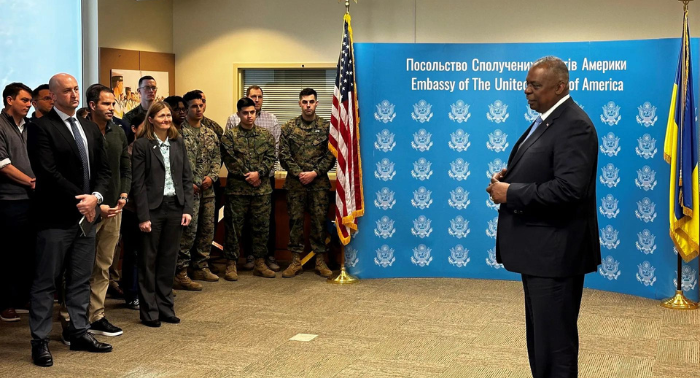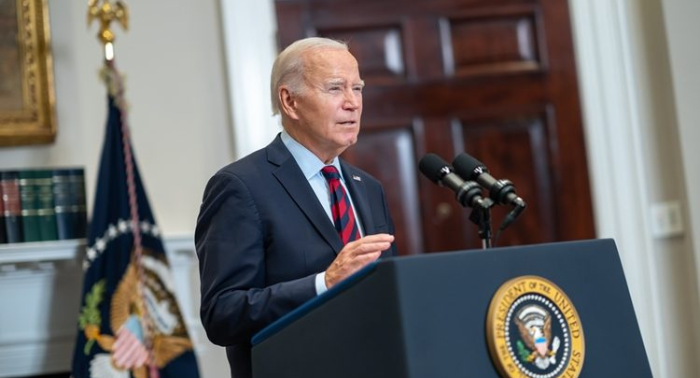U.S. Defense Secretary Lloyd Austin made a surprise visit to Kyiv, Ukraine, this Monday, amidst escalating global tensions due to the conflict between Israel and Hamas. This visit signifies a robust push to ensure continuous aid and weaponry to Ukraine, even as the U.S. and international resources are strained by emerging global challenges.
Austin, who arrived in Kyiv via train from Poland, has meetings scheduled with Ukrainian President Volodymyr Zelenskyy, Defense Minister Rustem Umerov, and Chief of Staff Gen. Valery Zaluzhny.
According to U.S. officials, Austin’s visit underscores the unwavering American commitment to supporting Ukraine against Russia’s invasion, even as global focus shifts to the Middle East and war-weariness increases after almost 21 months of conflict.
Austin expressed his support on X, formerly known as Twitter: “I’m here today to affirm that the United States remains steadfastly by Ukraine’s side in their fight for freedom against Russian aggression, now and in the future.”
This trip marks Austin’s second visit to Kyiv, under drastically different circumstances compared to his first visit in April 2022, two months after Russia’s major invasion. Back then, Ukraine was buoyed by worldwide condemnation of Moscow’s actions, and Austin spearheaded a global effort that now involves 50 countries collaborating monthly on support for Ukraine.
However, the recent Gaza conflict threatens to divert attention and resources from Ukraine. The U.S. has been actively working to prevent the escalation of these attacks into a wider regional conflict, following Hamas’ strikes on Israel on October 7 and the subsequent intense Israeli bombardments in Gaza, which have resulted in over 10,000 civilian casualties.
The U.S. has redeployed significant military assets to the Middle East, including two carrier strike groups, numerous fighter jets, and thousands of personnel. It has also adjusted its military posture and carried out airstrikes against Iranian-backed militant groups targeting U.S. bases in Iraq and Syria.
Ukraine has received substantial aid from the U.S. and its allies, totaling over $44 billion from the U.S. and more than $35 billion from other nations. This support has ranged from ammunition to advanced air defense systems, tanks, and promises of F-16 fighter jets.
However, Ukraine’s needs continue to grow, and after nearly 20 months of arms shipments, signs of strain are emerging. Some European nations, like Poland, have reduced their support, citing the need to maintain their own defense capabilities.
Ukrainian officials refute the notion of a stalemate with Russia, pointing to recent advances to the east bank of the Dnieper River. Andriy Yermak, head of the president’s office, emphasized this progress during a recent visit to Washington, although he didn’t provide specifics.
Fred Kagan, a senior scholar at the American Enterprise Institute, warned against reducing aid to Ukraine. “Halting support for Ukraine could enable Russian advances, potentially leading to a defeat for Ukraine and NATO,” Kagan stated.
The Pentagon faces budget constraints, with only limited funds remaining for continued arms shipments to Ukraine. The Pentagon can provide around $5 billion more from its own inventory but has only about $1 billion to replenish these stocks. As a result, recent aid announcements have been smaller in scale.
Pentagon Deputy Press Secretary Sabrina Singh highlighted the need for careful distribution of remaining resources, pending Congressional approval of additional funding.
The situation is further complicated by political disagreements in Congress. Some Senate Republicans are conditioning further aid to Ukraine on unrelated issues like immigration law reforms and border control funding. A recent stopgap spending bill passed to avoid a government shutdown did not include funds for Ukraine, underscoring the complexity of securing additional aid amidst these political dynamics.




